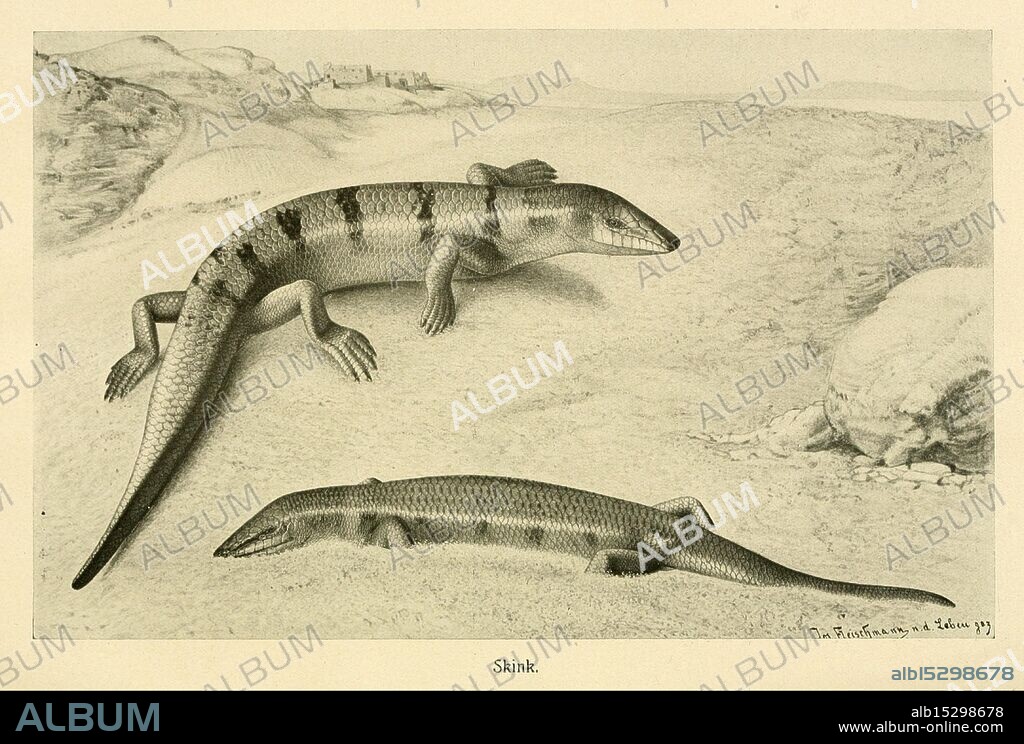alb15298678
Brehms Tierleben Leipzig, Bibliographisches Institut, 1911-19, zoology, animal behavior., The scene depicts two skinks, elongated and slender lizards characterized by their smooth bodies and short limbs. One skink is positioned prominently in the foreground, while the other is slightly behind, showcasing their distinct patterns of stripes and spots. The background features a sandy terrain that resembles a natural habitat, evoking a sense of their environment. These reptiles are well-known for their burrowing habits and are often found in warm, dry regions, contributing to the biodiversity of their ecosystems.

|
Zu einem anderen Lightbox hinzufügen |
|
Zu einem anderen Lightbox hinzufügen |



Haben Sie bereits ein Konto? Anmelden
Sie haben kein Konto? Registrieren
Dieses Bild kaufen.
Nutzung auswählen:

Untertitel:
Siehe automatische Übersetzung
Brehms Tierleben Leipzig, Bibliographisches Institut, 1911-19, zoology, animal behavior., The scene depicts two skinks, elongated and slender lizards characterized by their smooth bodies and short limbs. One skink is positioned prominently in the foreground, while the other is slightly behind, showcasing their distinct patterns of stripes and spots. The background features a sandy terrain that resembles a natural habitat, evoking a sense of their environment. These reptiles are well-known for their burrowing habits and are often found in warm, dry regions, contributing to the biodiversity of their ecosystems.
Bildnachweis:
Album / quintlox
Freigaben (Releases):
Model: Nein - Eigentum: Nein
Rechtefragen?
Rechtefragen?
Bildgröße:
3557 x 2400 px | 24.4 MB
Druckgröße:
30.1 x 20.3 cm | 11.9 x 8.0 in (300 dpi)
Schlüsselwörter:
 Pinterest
Pinterest Twitter
Twitter Facebook
Facebook Link kopieren
Link kopieren Email
Email
